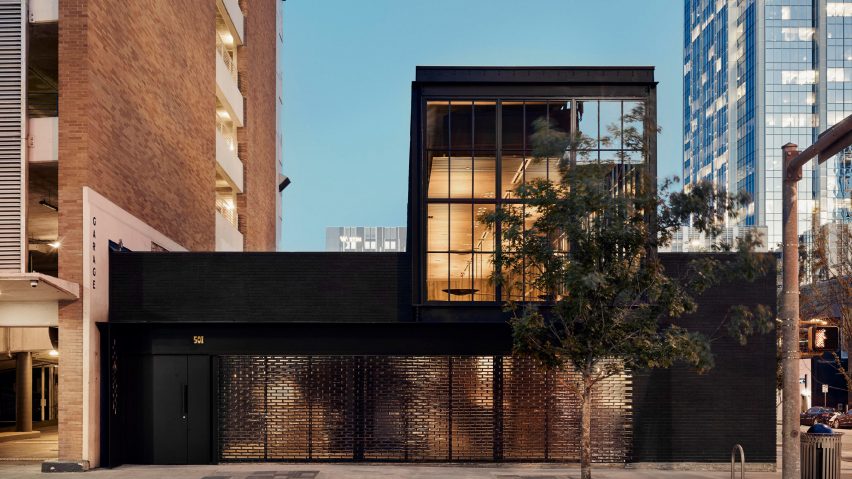
Big glass box brings light into Olson Kundig's Comedor restaurant in Austin
Hand cranks are used to lift up huge glass doors that open to a courtyard in this Mexican restaurant, which Seattle firm Olson Kundig has completed in downtown Austin.
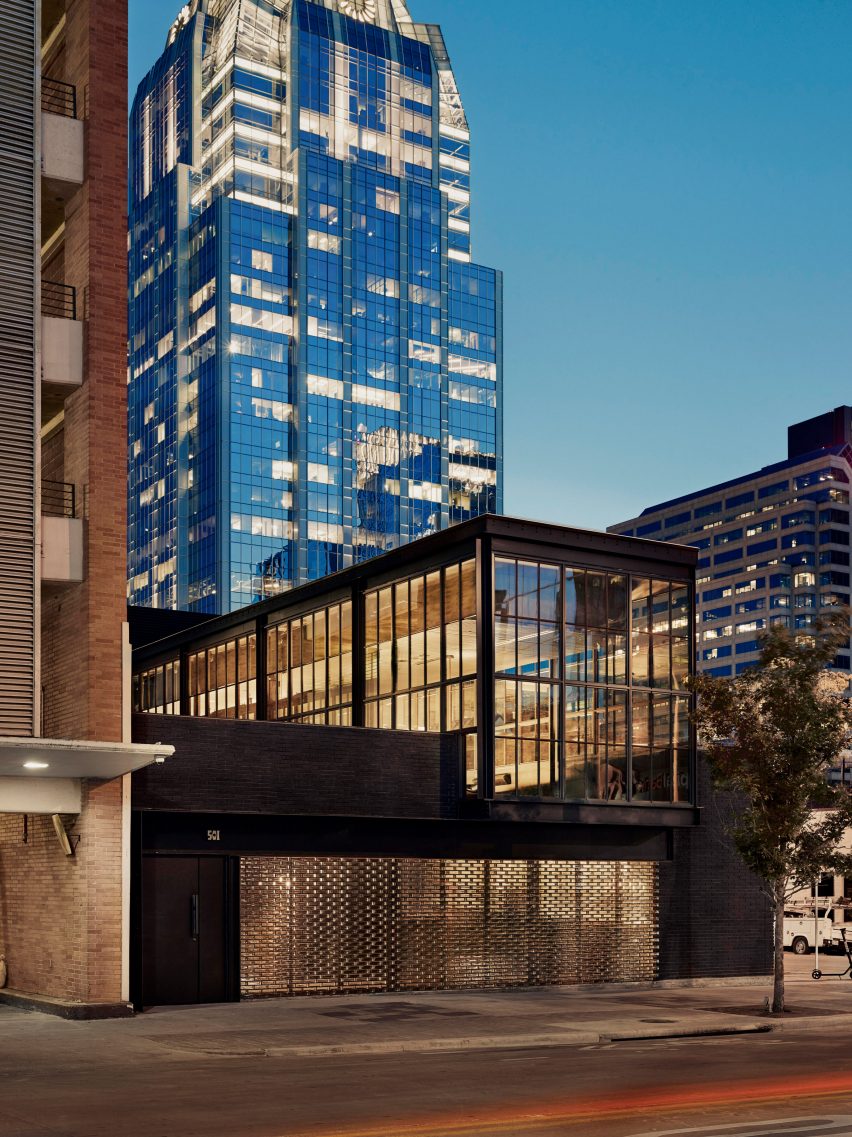
Olson Kundig designed the 4,700-square-foot (437-square-metre) Comedor restaurant for a corner plot in Austin's business district. The aim was to create both a commanding presence in the city and offer respite from its busy surrounds.
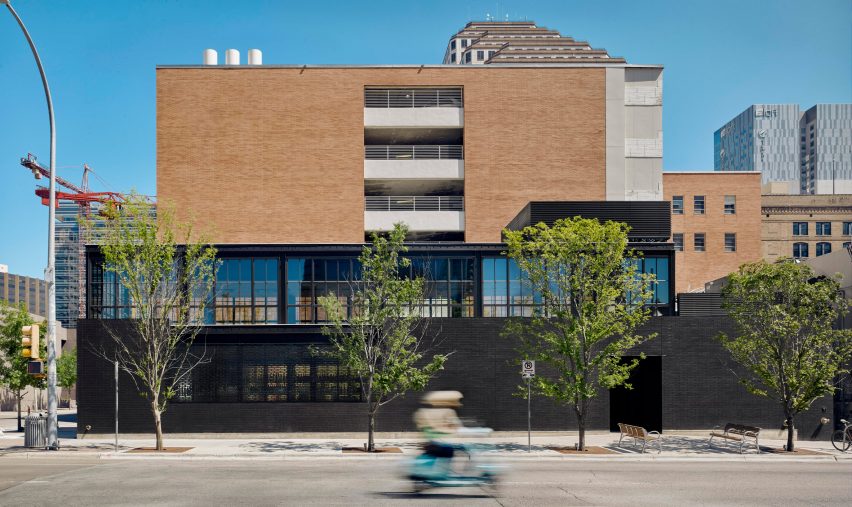
The Mexican eatery at 501 Colorado Street, which is led by chefs Gabe Erales and Philip Speer, comprises a double-height bar and dining area, and an adjoining outdoor patio. From the outside, these are hidden by dark brick walls.
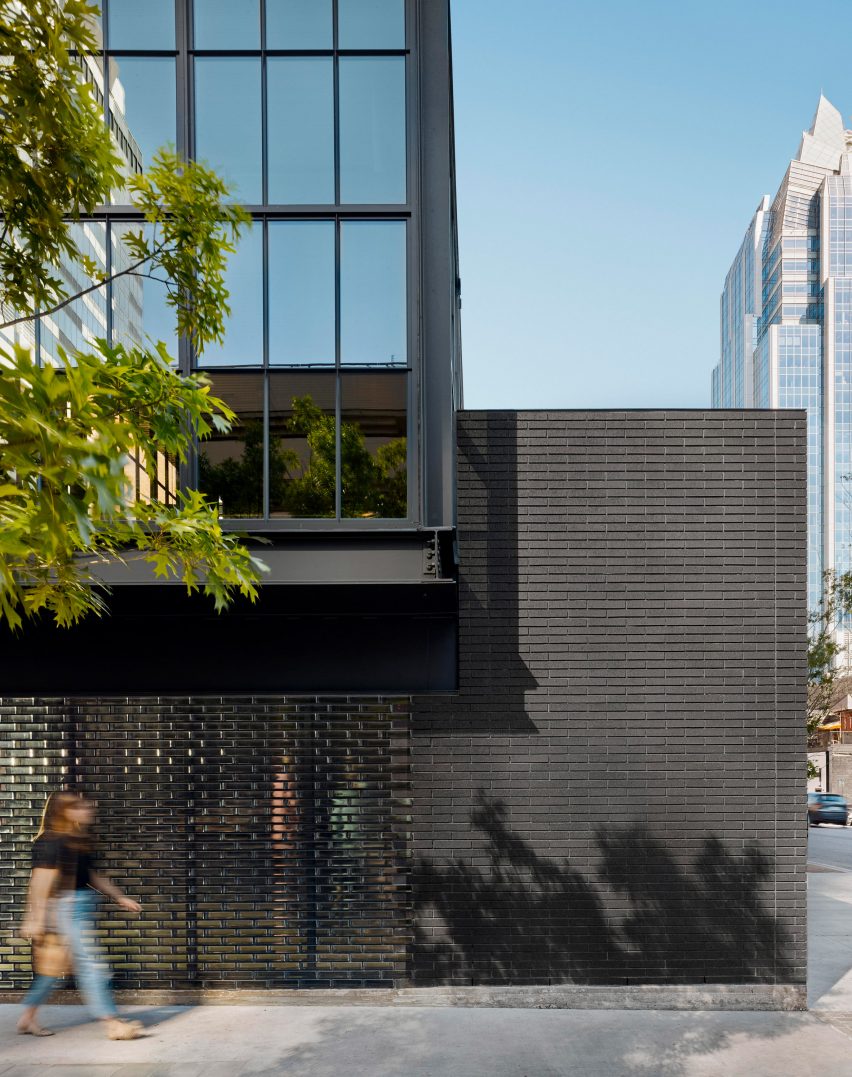
"For Comedor, we created a sanctuary on a very busy urban corner," said firm principal Tom Kundig, who led the project.
"The building is able to modulate between a protected interior refuge, and a strong position on a bustling Austin street – yin and yang."
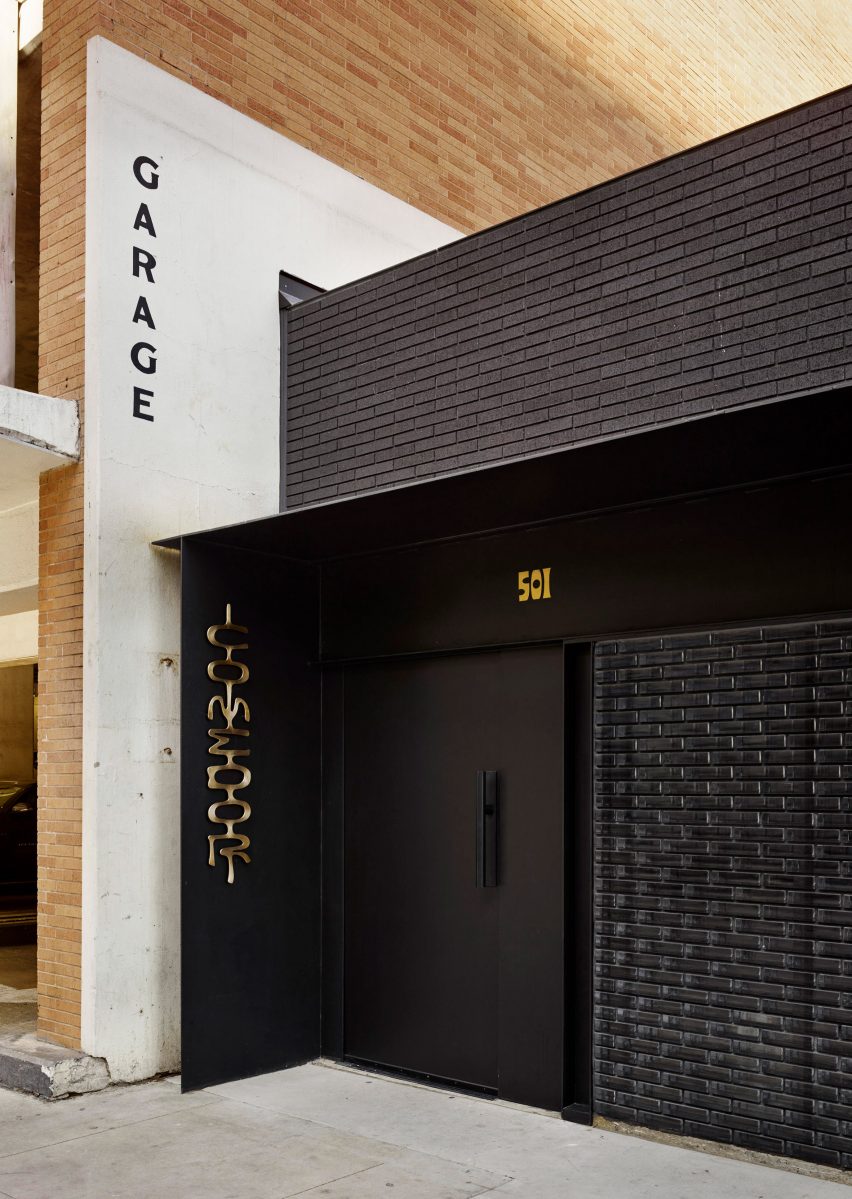
Kundig has interspersed portions of the black brickwork that wrap the lower level with translucent glazed blocks to offer privacy from the street, as well as glimpses inside.
"We incorporated glass block on the street-facing portions because it was important to invite people into Comedor without giving anything away before they enter," said the architect.

A large glass box slotted on top extends over each side and features thick steel frames that reference the blackness of the lower structure. This volume forms the roof of the main bar and restaurant to keep it filled with natural light.
At night, the upper structure and the glazed brickwork walls illuminate when the interiors are lit.
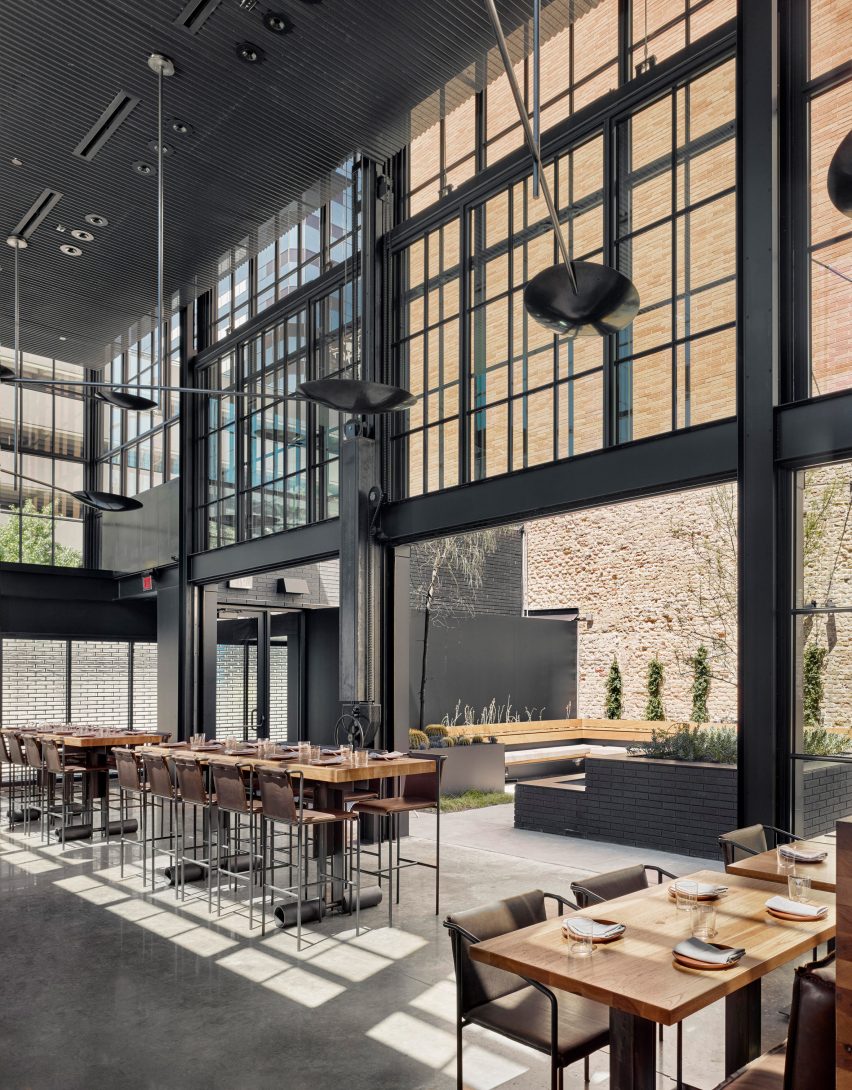
A glass and steel wall running along the rear of the restaurant features two huge windows that can be lifted up to open up to the yard – ideal for use in Austin's warm climate.
"Working with Tom, we were able to distill Comedor down to one fundamental design concept: a hidden interior courtyard flanked by a glowing box of light," added Comedor's managing partner William Ball.
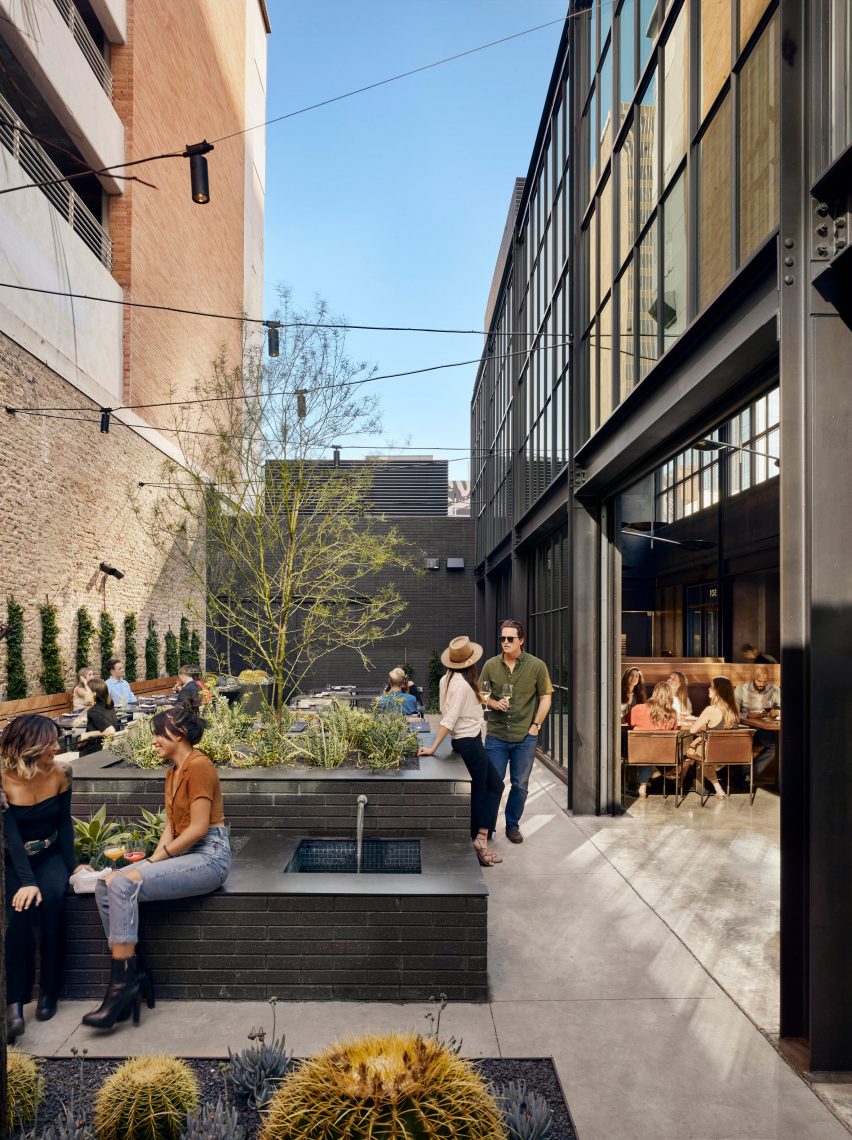
The pulley feature follows in the rough-and-ready approach that Olson Kundig often uses in its projects – the firm employed a similar system to create a set of swinging glass doors in a rural home in Idaho.
A brickwork wall belonging to the adjacent McGarrah Jessee Building, which is over 100 years old, forms the backdrop to the patio. Other details are provided by black brick planters, a small fountain and Palo Verde and Acacia trees.
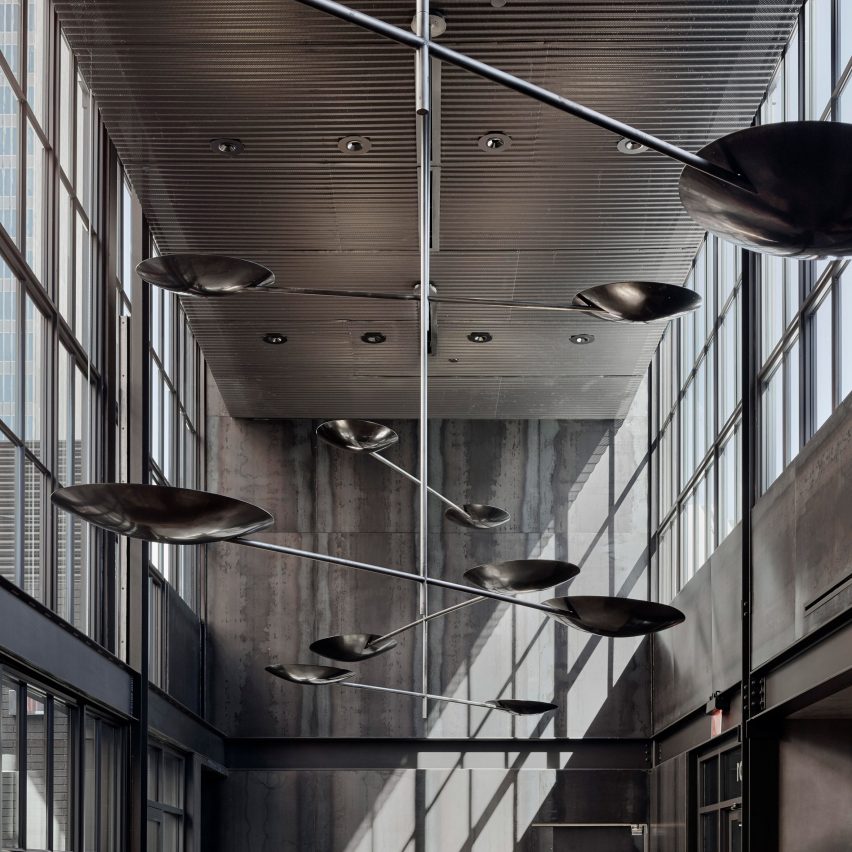
Inside, the decor of the restaurant is stripped-back and industrial, comprising exposed black steel details and concrete. Olson Kundig created a series of custom furniture, including Hickory-wood tables and dark leather chairs, and lighting to complement this.
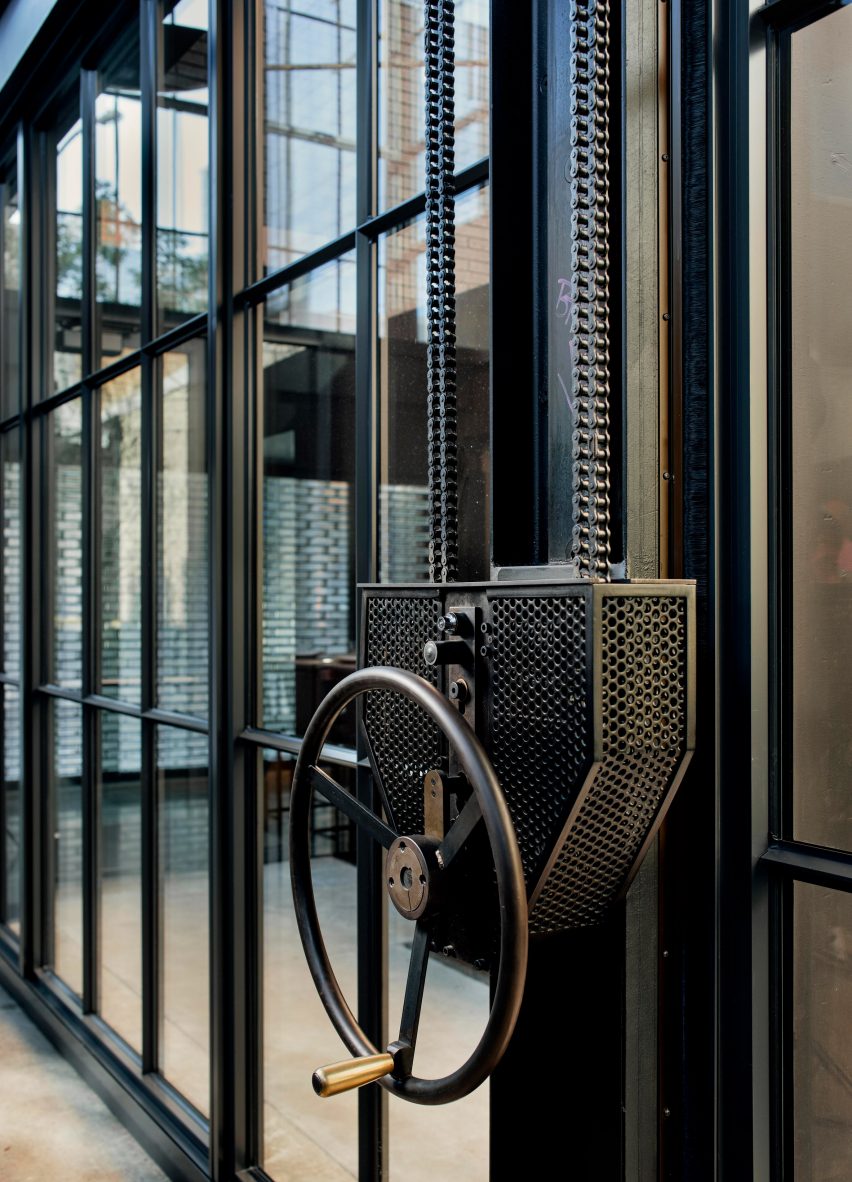
A number of seatings areas are offered in the space, including a pair of long, family-style dining tables. Towards the rear of the eatery, a set of benches provide partitions between tables for smaller groups.
A number of different material details can be found in the bar area, such as the counter featuring a white marble top and brassy base.
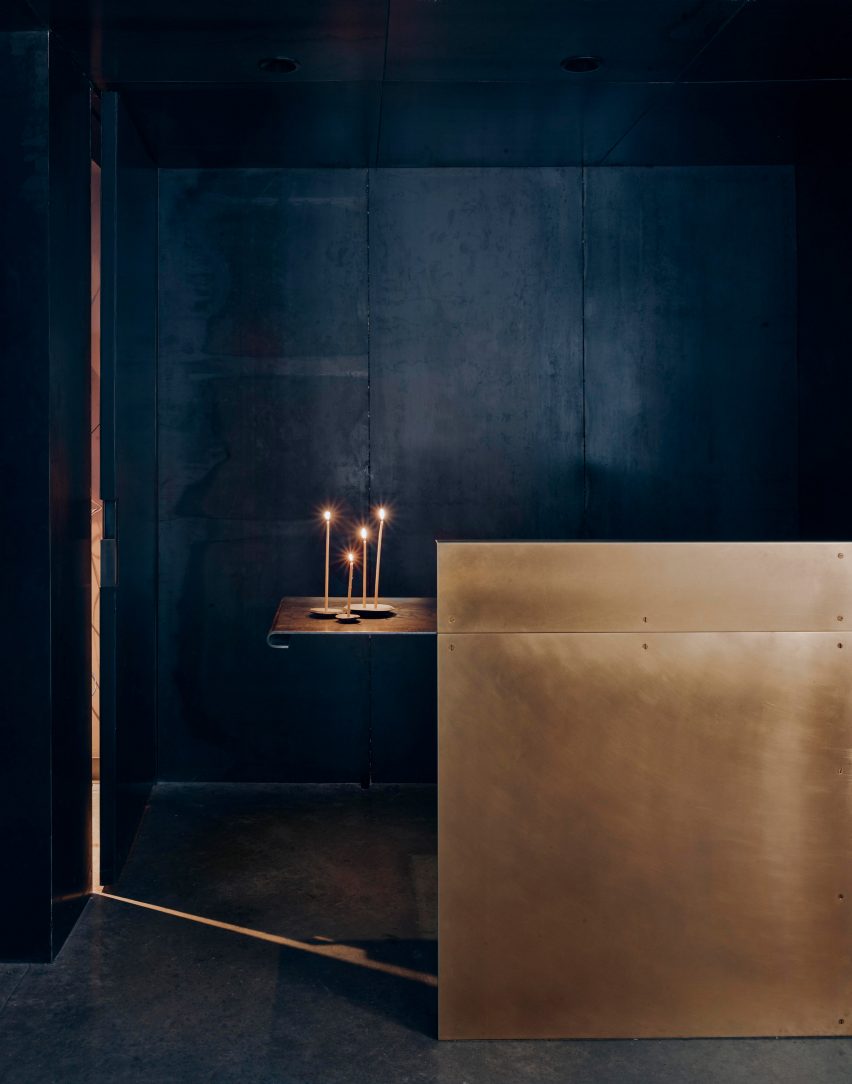
Olson Kundig was founded by architect Jim Olson in 1967. Kundig, 64, has been a partner since 1986.
Recent projects by the firm include an artist's retreat in Washington featuring large bi-folding doors and a stepped winery in British Columbia.
Photography is by Casey Dunn.
Project credits:
Project team: Tom Kundig, FAIA, RIBA, Design Principal; Bob Jakubik, AIA, LEED® AP, Project Manager; Joe Fillipelli and Claire Fontaine, Architectural Staff; Laina Navarro, Interior Design; Megan Adams, Interior Design Staff; Phil Turner, Gizmo Design
Developer: William Ball
Restaurant partners: William Ball (managing), Philip Speer, Connor Oman
Key consultants: The Burt Group, General Contractor; McKinney/York Architects, Architect of Record; Micki Spencer, Interior Production; Stantec, Civil Engineer; The Garden Design Studio, Landscape Architect; Structures, Structural Engineer; Aptus Engineering, MEP Engineer; O- Lighting, Lighting Design; KB Architectural Services with Phil Turner, Gizmo Design; Drophouse Design, Gizmo Fabrication